The Bangladesh war was one of the 20th century’s bloodiest, yet outside the region, little is known about it. Now, 37 years on, an exhibition records the painful birth of a nation.
Tahmima Anam report




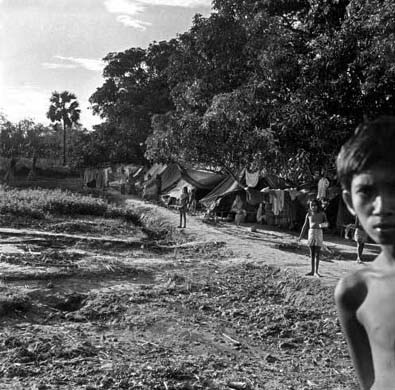
In December 1971, in the midst of their celebrations at the end of the war for independence from Pakistan, the people of Bangladesh began to reckon with the human cost of their new nation. As they took account of what they had won and what they had lost, Sheikh Mujibur Rahman, the independence movement leader who became the first prime minister of Bangladesh, urged his people to embrace the many thousands of women who had been raped by Pakistani soldiers. He gave the women a title – birangona, brave women – seeking both to exalt them as war heroes and erase the shame of their violation.
The contradiction between exalting and forgetting persists in Bangladesh, where the war remains a contested space, still charged 37 years later with an emotional and psychological intensity that brings to life William Faulkner’s words “The past is never dead, it is not even past”.
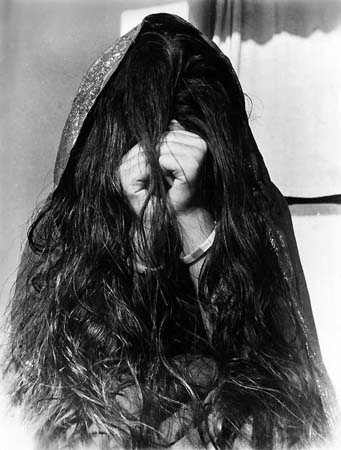
Yet these complexities are captured in a photograph taken by Naib Uddin Ahmed of a woman – one of the birangona – obscuring her face by clutching a thick mass of her own hair. This is just one of many haunting images that make up Bangladesh 1971, a new photographic exhibition at the Rivington Place public gallery in Shoreditch, east London, and which contribute to its powerful visual retelling of the story of this war.
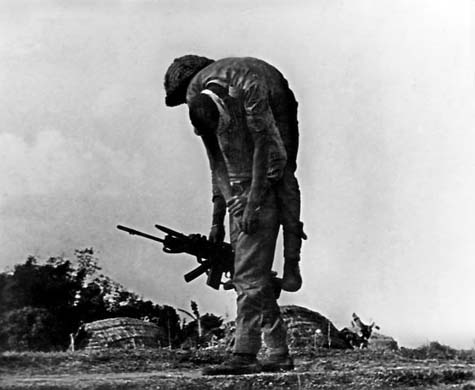
It was one of the bloodiest conflicts of the 20th century, and yet it is a largely unacknowledged event: outside Bangladesh there is little awareness of the campaign of violence on the part of the Pakistani army as the Bengali people of the then East Pakistan sought to achieve political sovereignty.
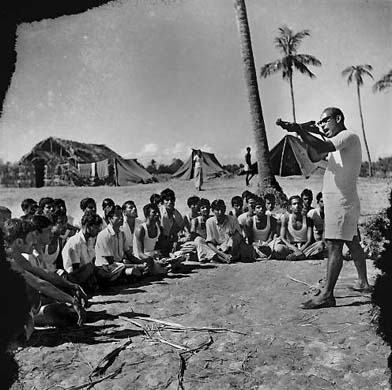
In this exhibition, all but one of the photographers are Bangladeshi; most were amateur photographers at the time, men who happened to be holding a camera when they found themselves caught up in the war. For almost two decades, Shahidul Alam – director of the Drik picture library in Dhaka and a curator of the current exhibition along with Mark Sealy, director of photographic agency Autograph ABP – has made it his mission to collect these photos, visiting the photographers in their homes and saving their negatives. By highlighting the images taken by these accidental archivists, the curators have created an intimate, reflexive portrait of the war, ranging from photographs that are well known to others that have never been seen in public.
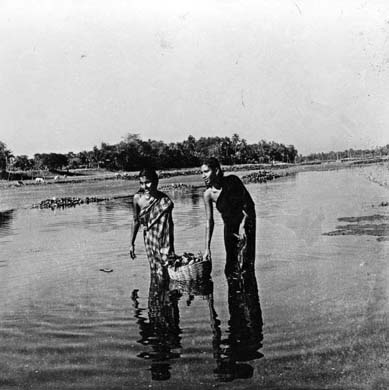


The exhibition consists of more than 100 images organised in loose chronology, beginning with the first stirrings of nationalism and resistance to Pakistani occupation. The ebullient spirit of 1969-70, when war was imminent, is captured most powerfully by Rashid Talukdar’s image of a young boy, no older than 10, leading a street march. The boy is obviously poor (he marches in bare feet) but his mouth is formed in an ecstatic shout as he leads the procession of men behind him, as though for those few minutes, it is his war, his people, his country.
The collection includes many iconic, even universal, images of war: Abdul Hamid Raihan’s image of two children staring into the distance, a carpet of missiles scattered at their feet; Mohammed Shafi’s portrait of a freedom fighter – a boy who could be from anywhere – reveals a young man’s tenderness and fear apparent despite his attempt at studied resolve. Other images reveal the horror of this war with haunting specificity. On the night of December 14, knowing they were about to lose the war, the Pakistani army and its local paramilitary allies massacred the future doctors, teachers, lawyers, and writers of Bangladesh in an effort to cripple the new nation. The bodies were not found until after independence, when a mass grave was discovered in the city. One photograph of the massacre stands out: a face surrounded by submerged bricks and covered in a thin sheen of mud. The face is ghostlike, other-worldly, and the aesthetic intensity of the image serves to underscore the almost unfathomable brutality of the act.
Bangladesh 1971 also presents a complex portrait of the slaughter.
One photograph shows a uniformed man circled by a large crowd, stabbing a civilian with a bayonet; the caption tells us that it is not a Pakistani soldier but a Bengali one, attacking a local man who has collaborated with the army. At Alam’s first exhibition of war photos in Bangladesh, the government requested that he remove this image, in which the roles of victim and perpetrator are reversed. His refusal led to the exhibition being shown at a private gallery rather than at the National Museum.
There are other complex figures, most notably Sheikh Mujib. Revered throughout the independence struggle as the father of the nation, then brutally assassinated in 1975, Mujib left a legacy that is continually being reassessed, not least because his daughter, Sheikh Hasina Wajed, is a prominent Bangladeshi politician. Naib Uddin Ahmed’s photograph of Mujib returning to Dhaka in January 1972 (he had been in prison in Pakistan throughout the war) emphasises the passion he inspired in his followers, as his procession is surrounded by thousands of cheering citizens of the newborn country. But the most touching portrait of Mujib is one where he is shown embracing his daughter, the young Hasina. He glows with pride, and she with love. It’s a reminder that behind every political execution – and south Asia has had its share – is the death of a loved one.
It is in its attempt to challenge our expectations that the exhibition is most successful. In the flagship piece, displayed against the window of Rivington Place, a group of women march in perfect formation through the middle of a busy road, rifles cupped in the palms of their hands. Another photograph is a seemingly idyllic image of two women wading through a pond with a basket of flowers. But the caption reads: “During the liberation war, female freedom fighters would smuggle grenades in baskets covered with water hyacinth.” Scenes like this were common during the independence movement: many young women were given informal military training; in the villages, especially among the Adivasi hill people, women smuggled arms to the front lines of the resistance. Bringing these images to light in this setting challenges our notions of women’s political participation in a country like Bangladesh. And as Londoners walk past Rivington Place, perhaps they will find a new window into the history of their neighbours on Brick Lane, a visual testament to the trauma and hope of independence.
Bangladesh 1971 is at Rivington Place, London EC2A 3BA, until May 31. Info: +44 (0)20-7749 1240.
In pictures: the Bangladesh 1971 Gallery
This article appeared in on on p12 of the section. It was last updated at 02:07 on April 10 2008.
Time Magazine article:
Time Magazine photo gallery:
Historic news clip about killings in Khulna
Death by firing squad in Dhaka University
Indian news clip





Leave a Reply
You must be logged in to post a comment.